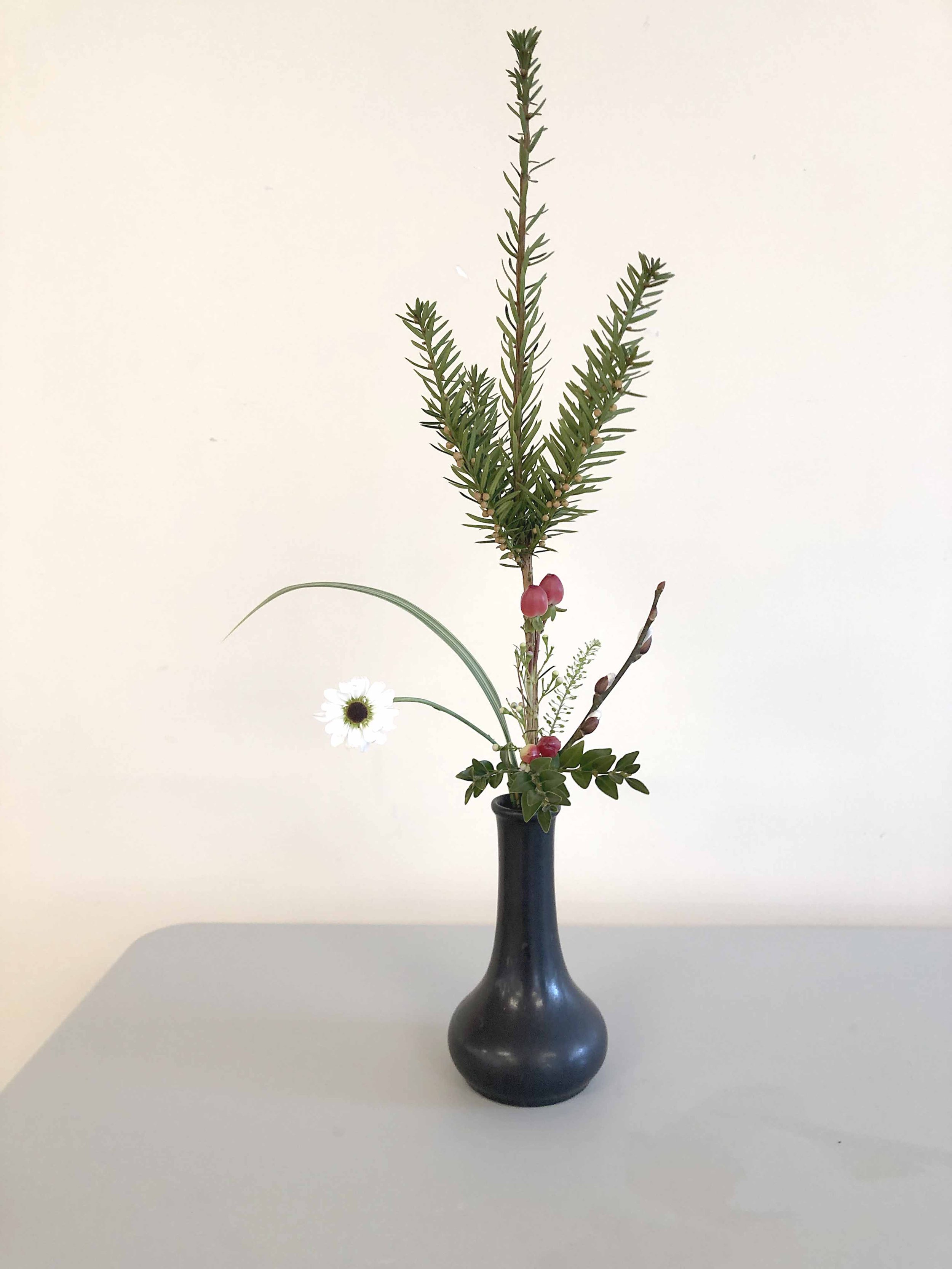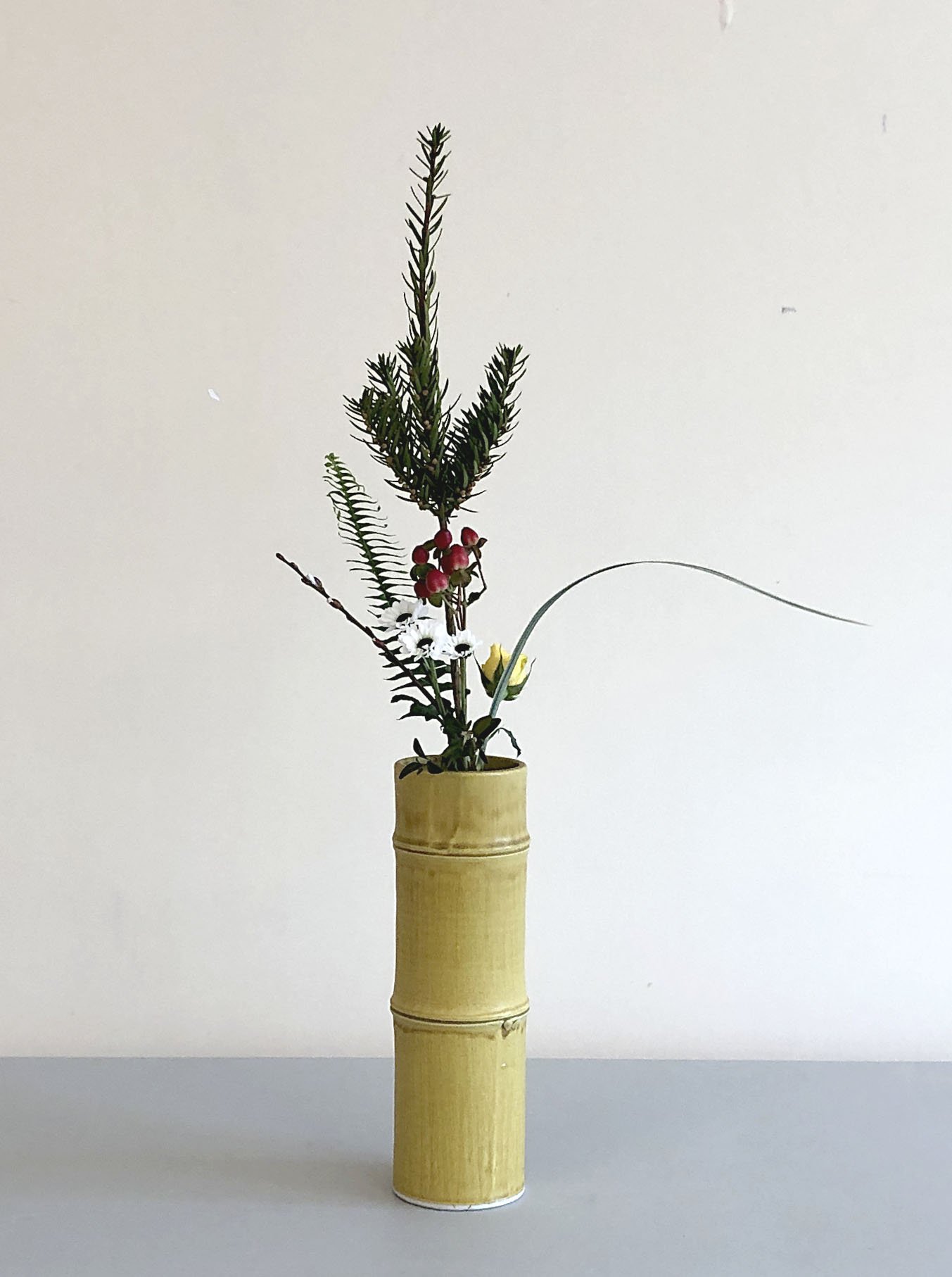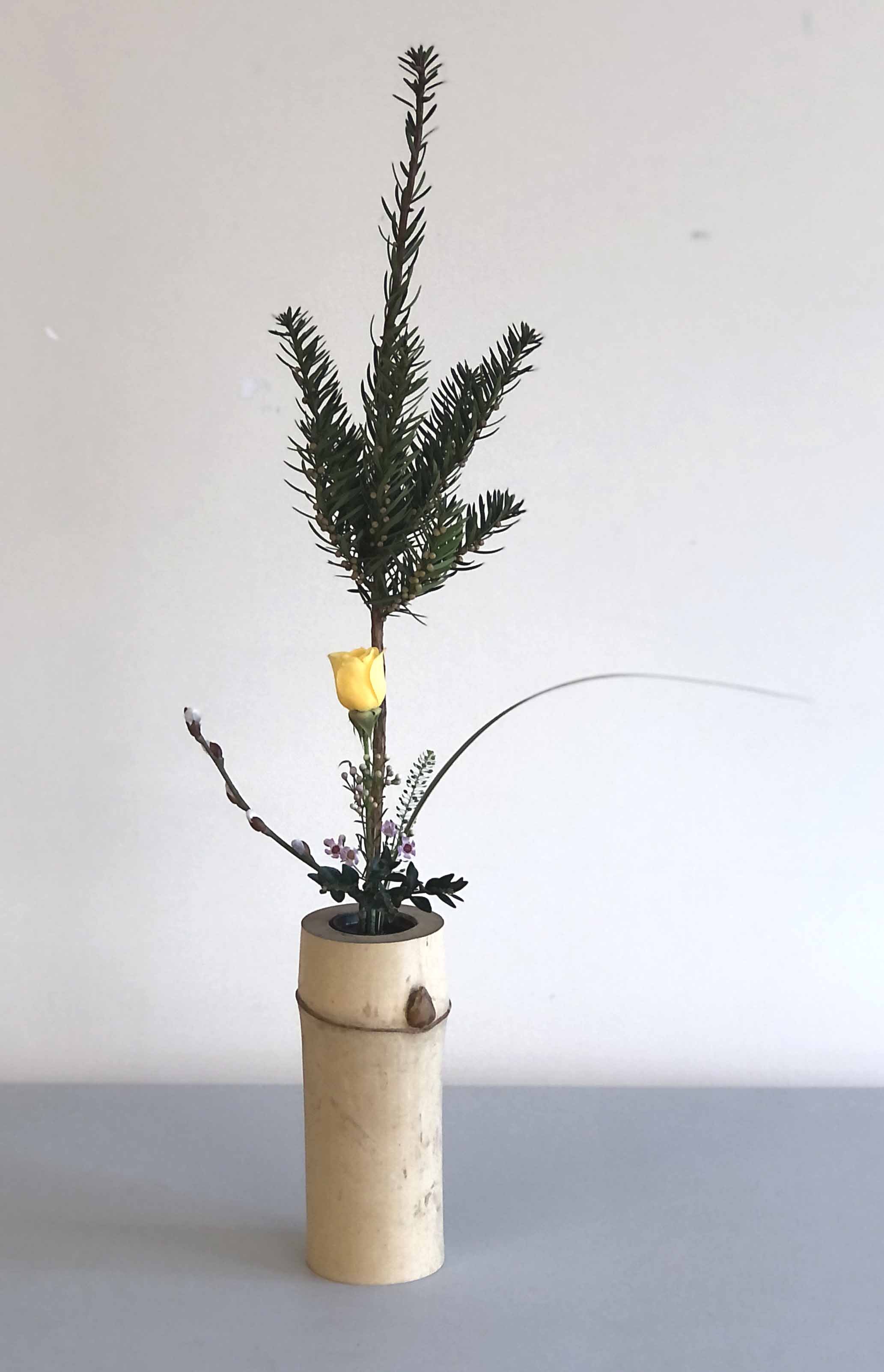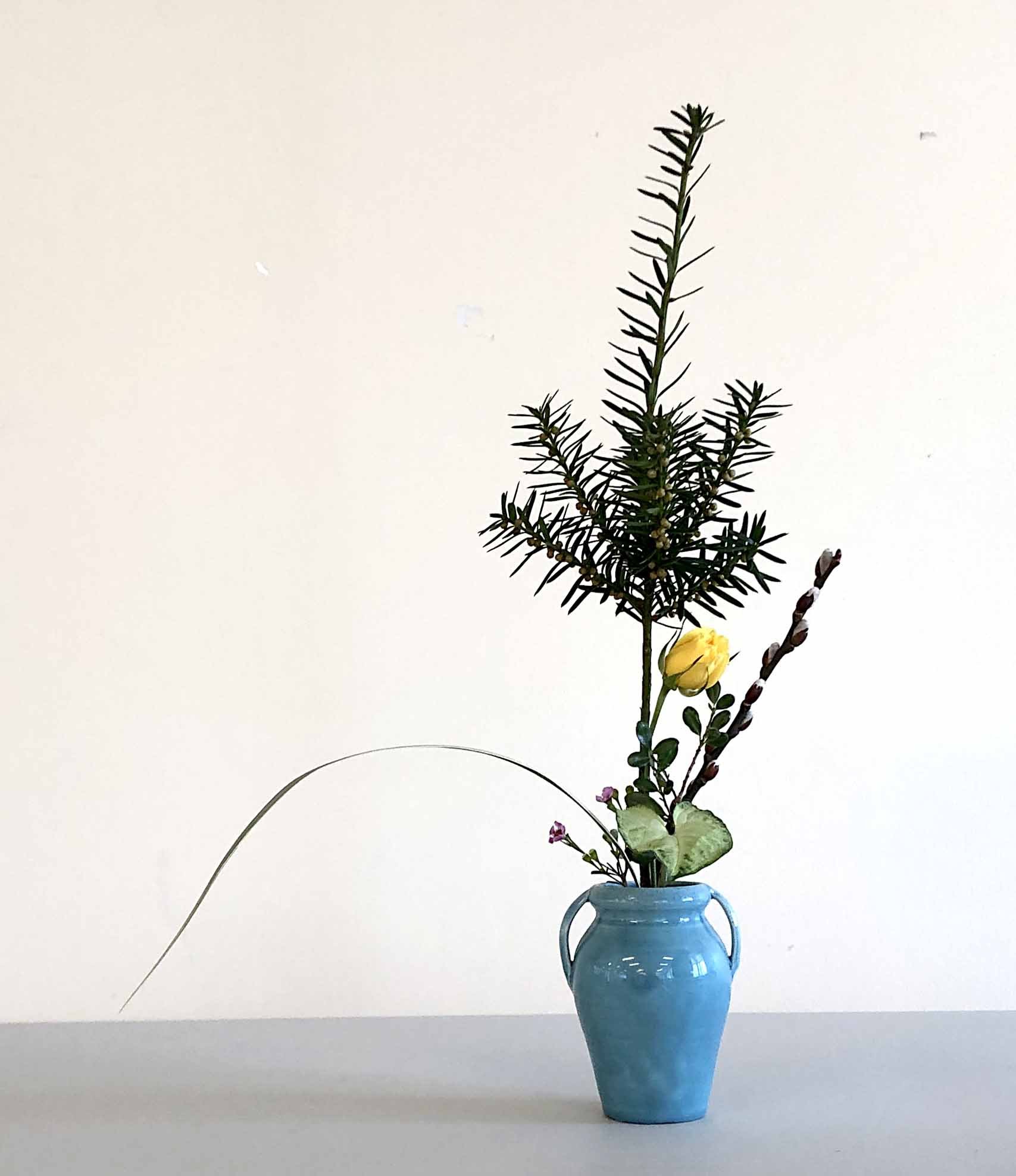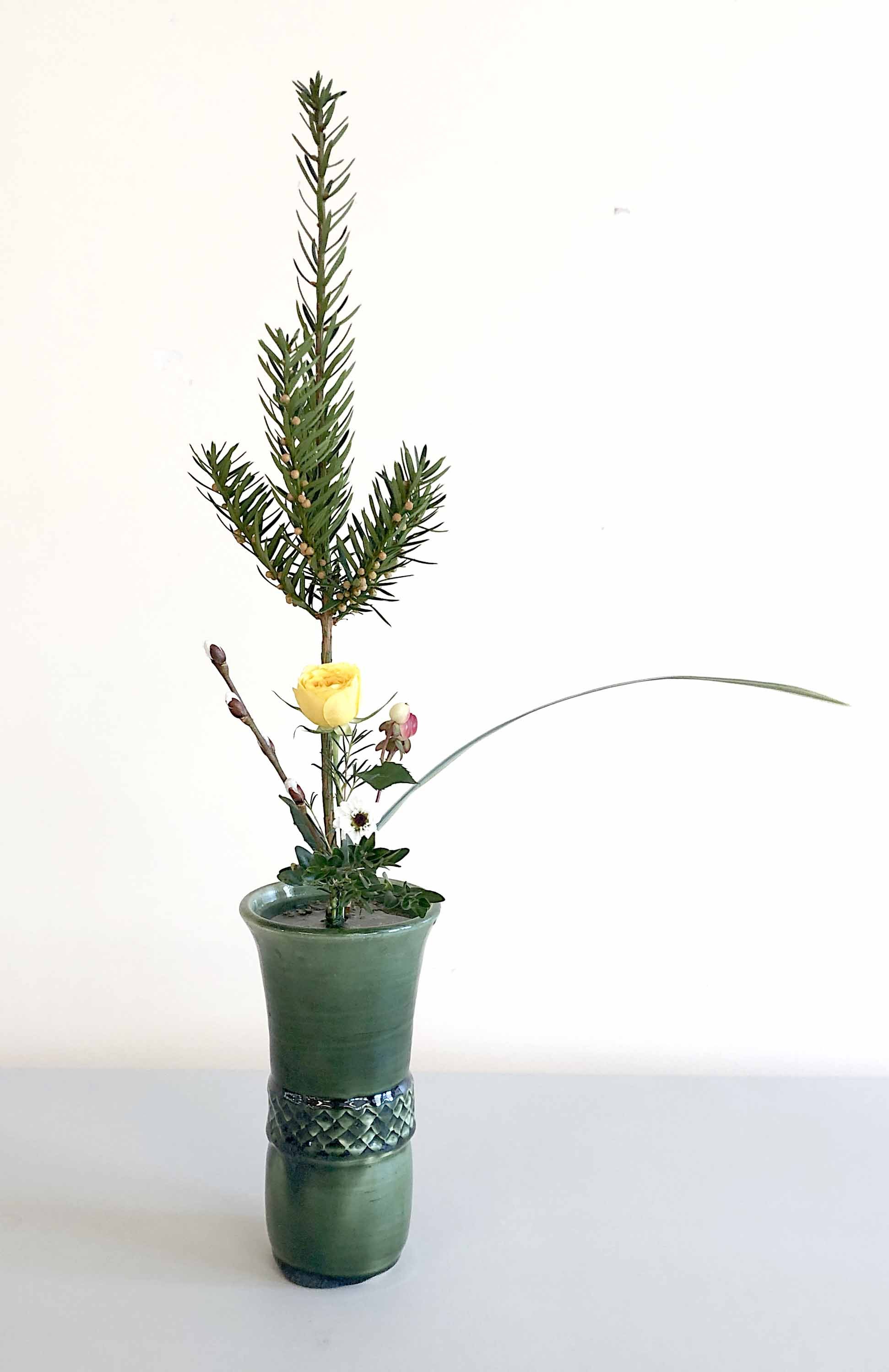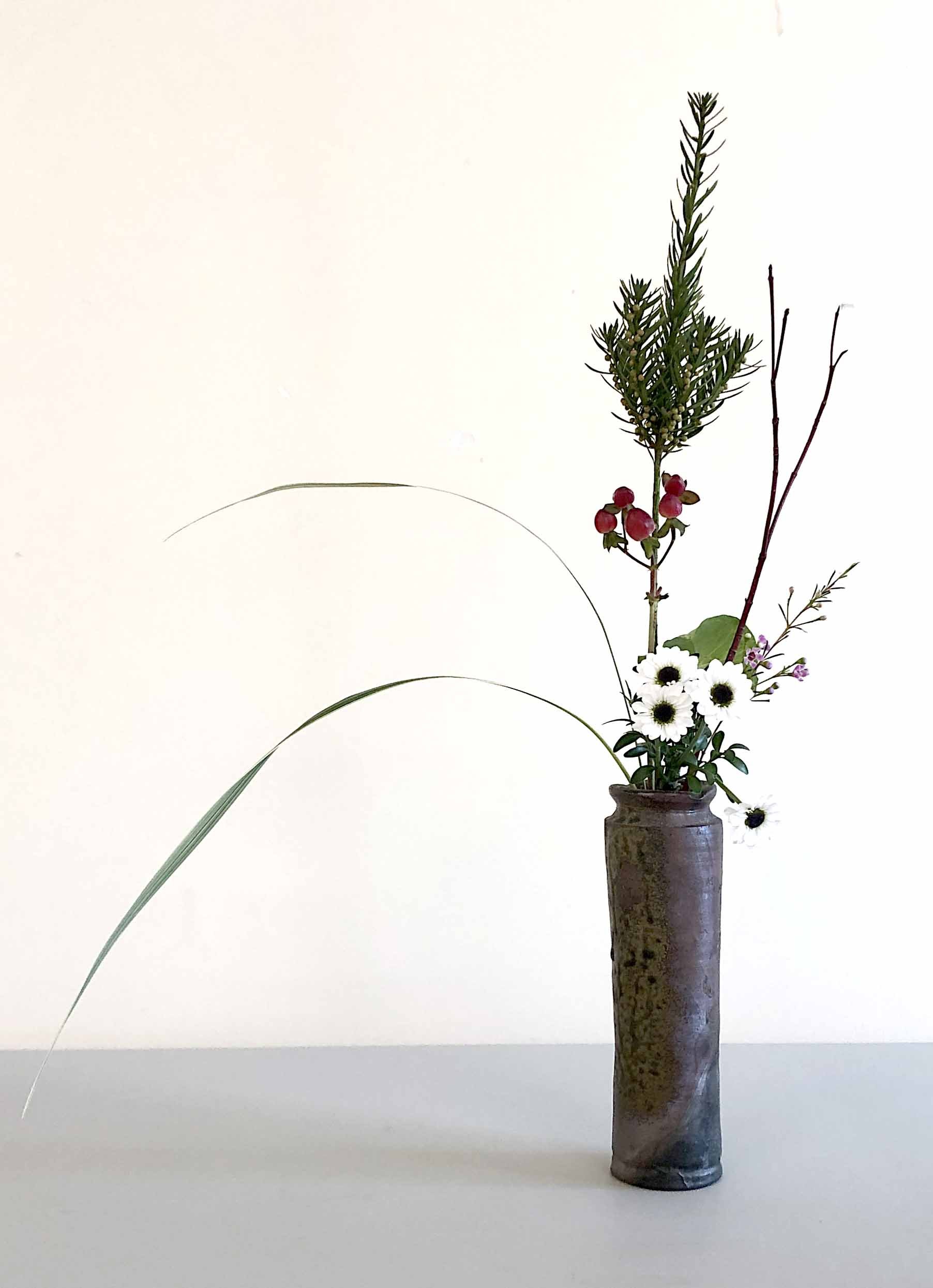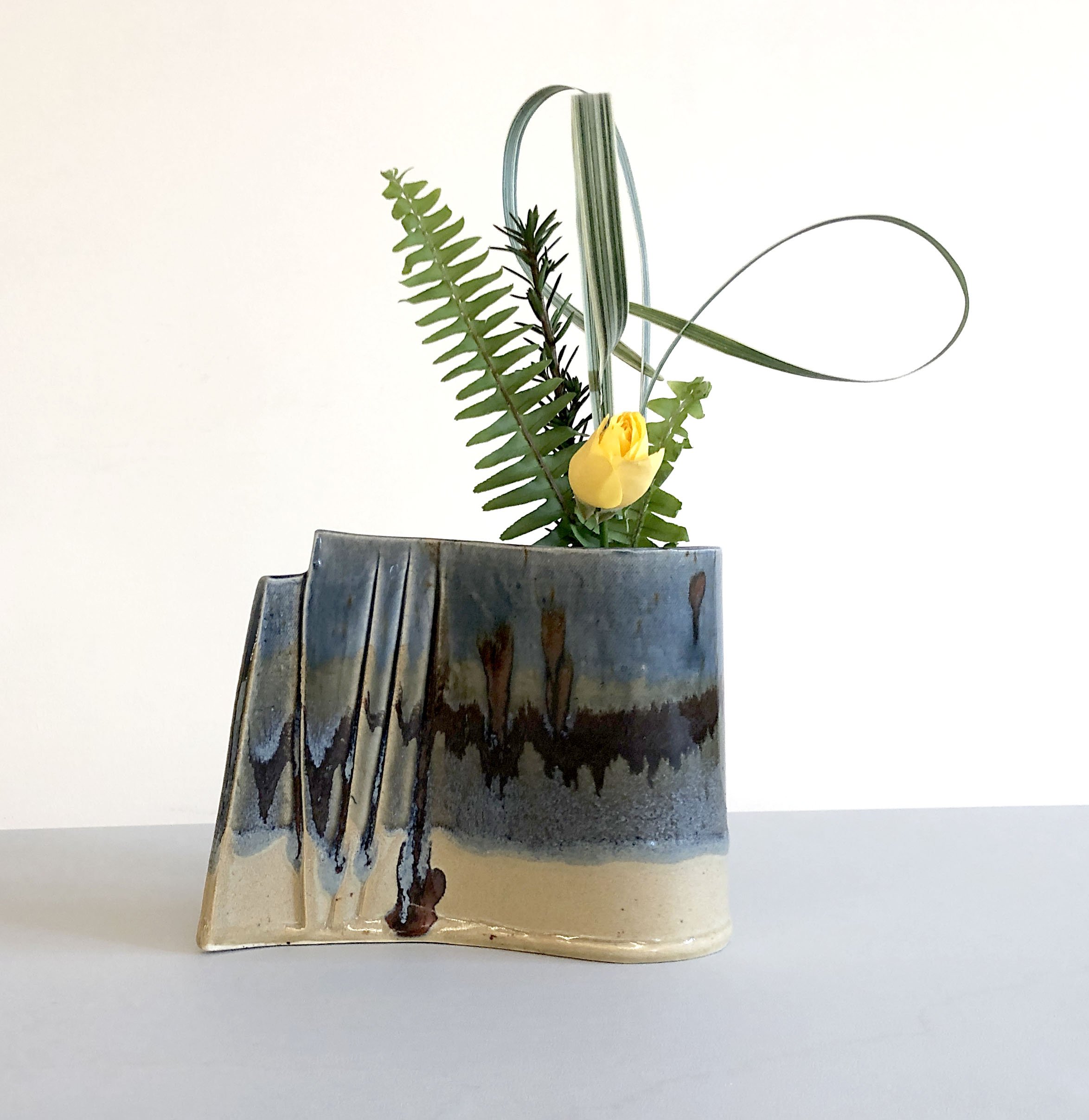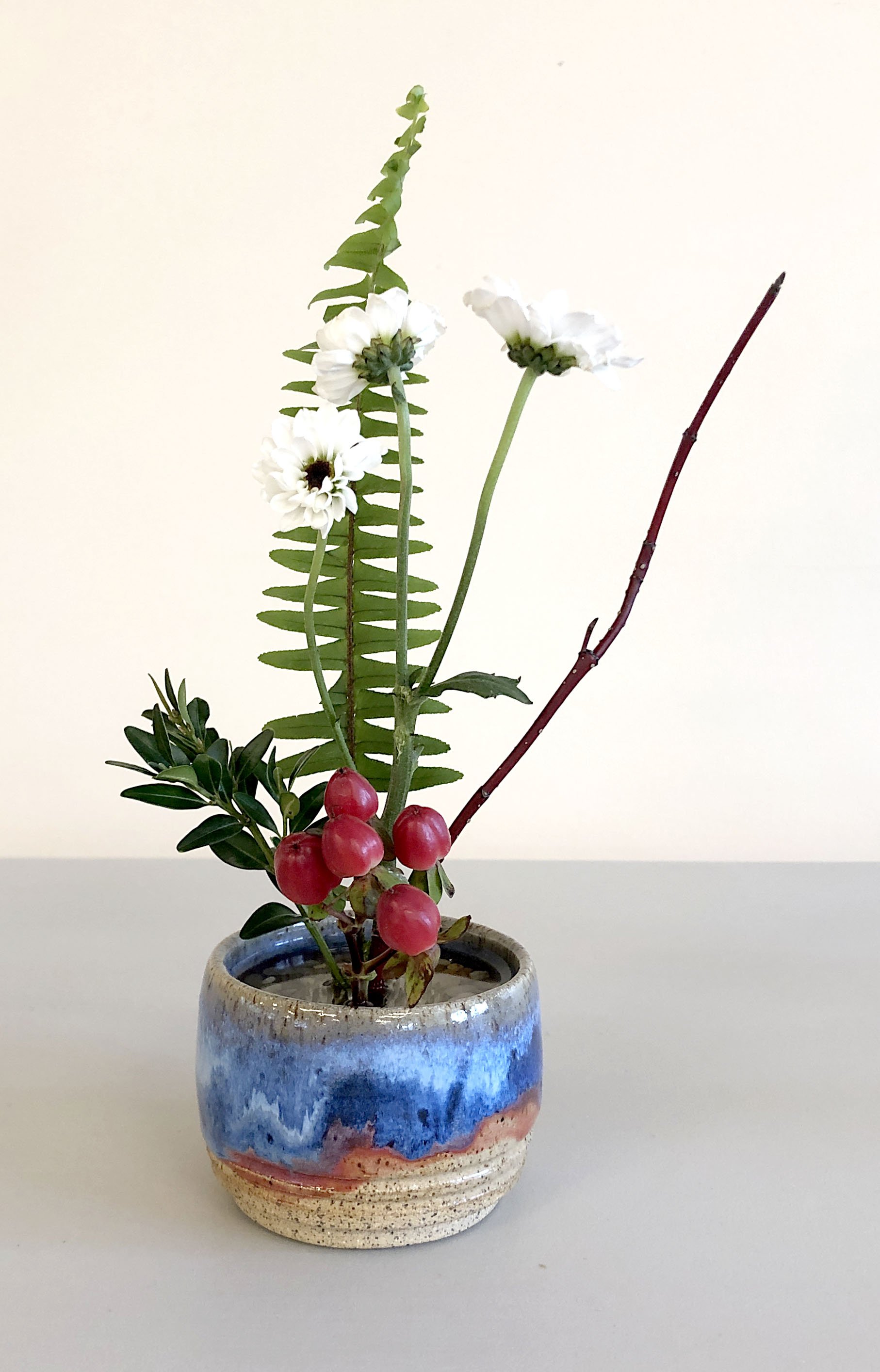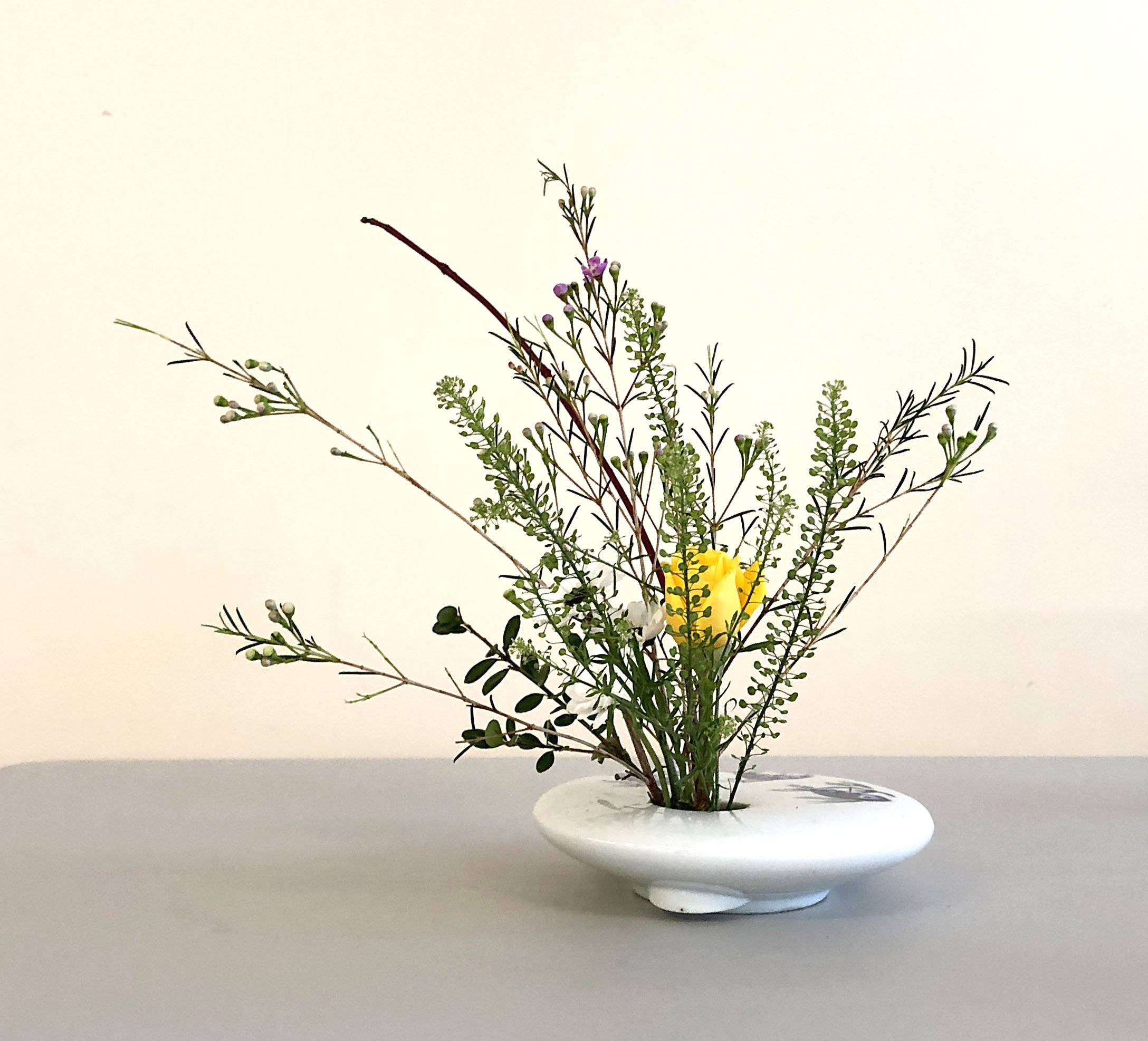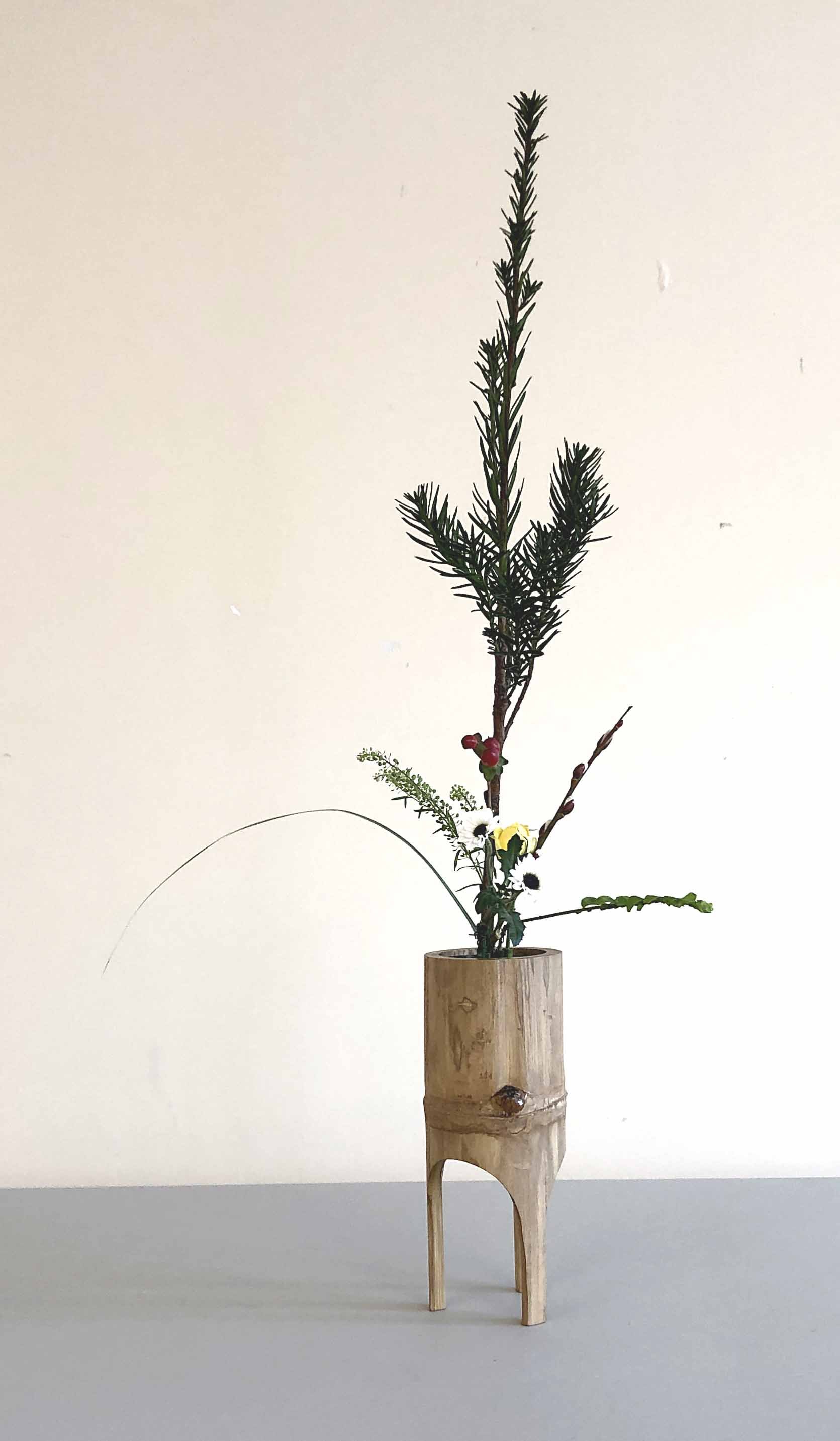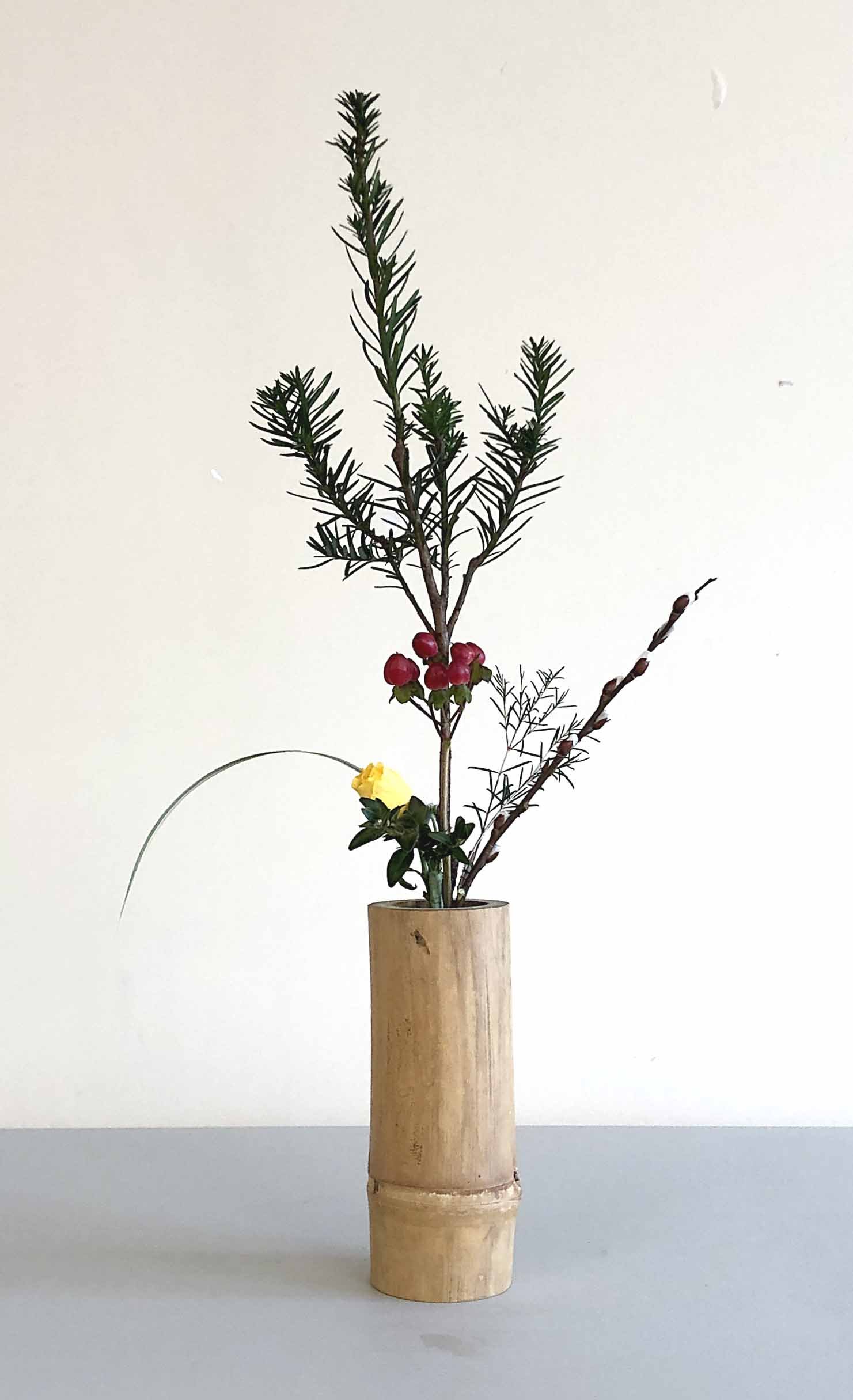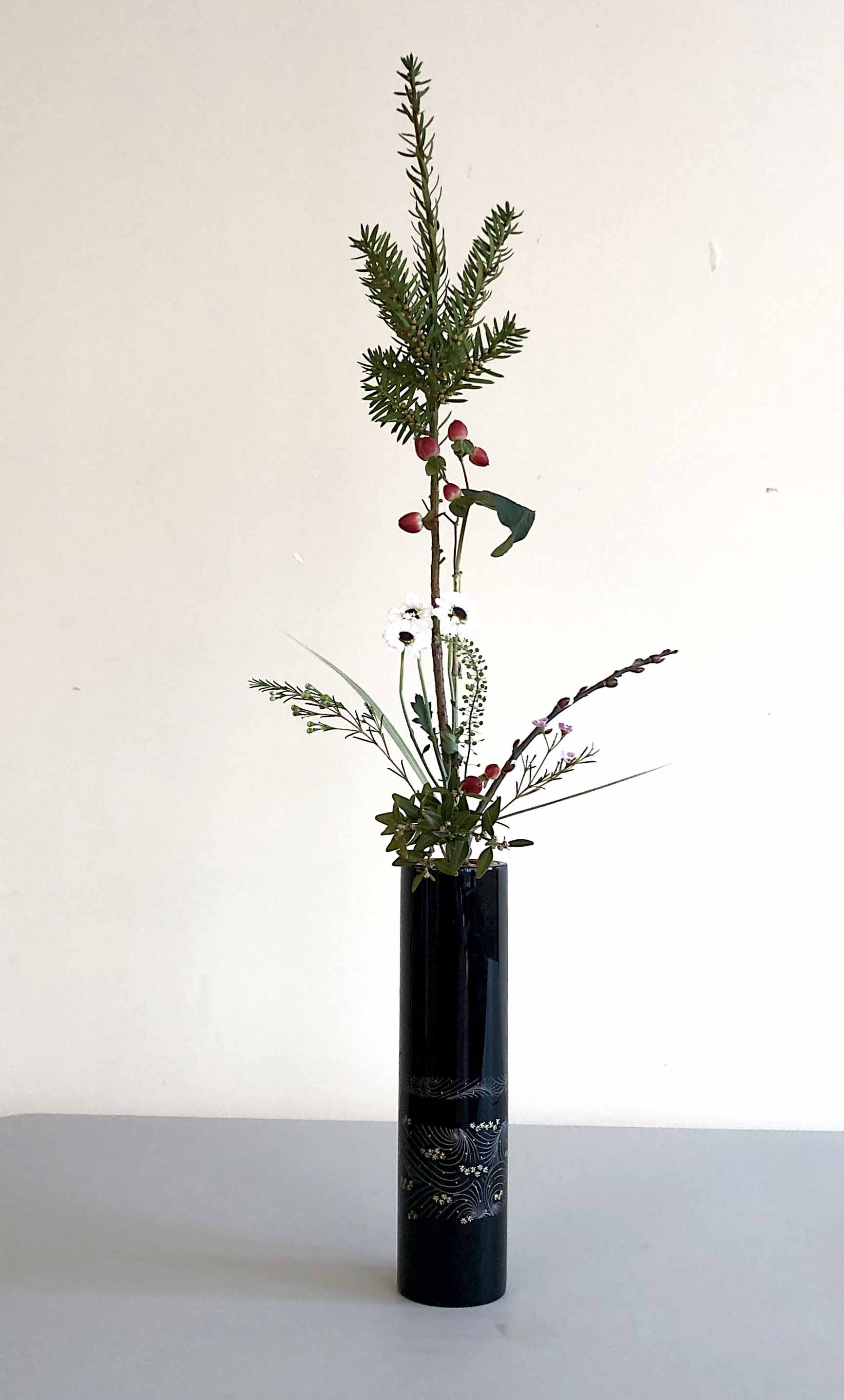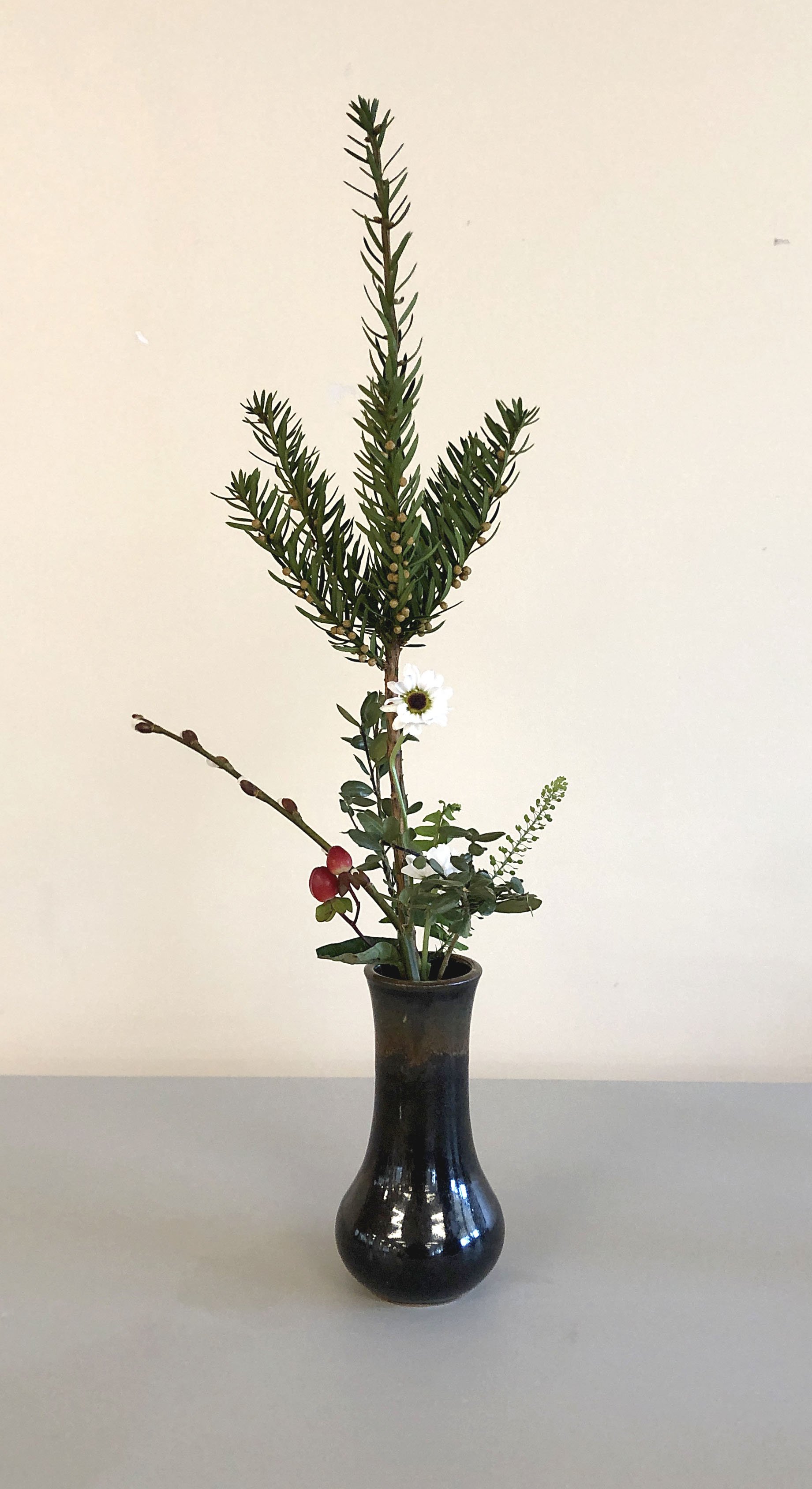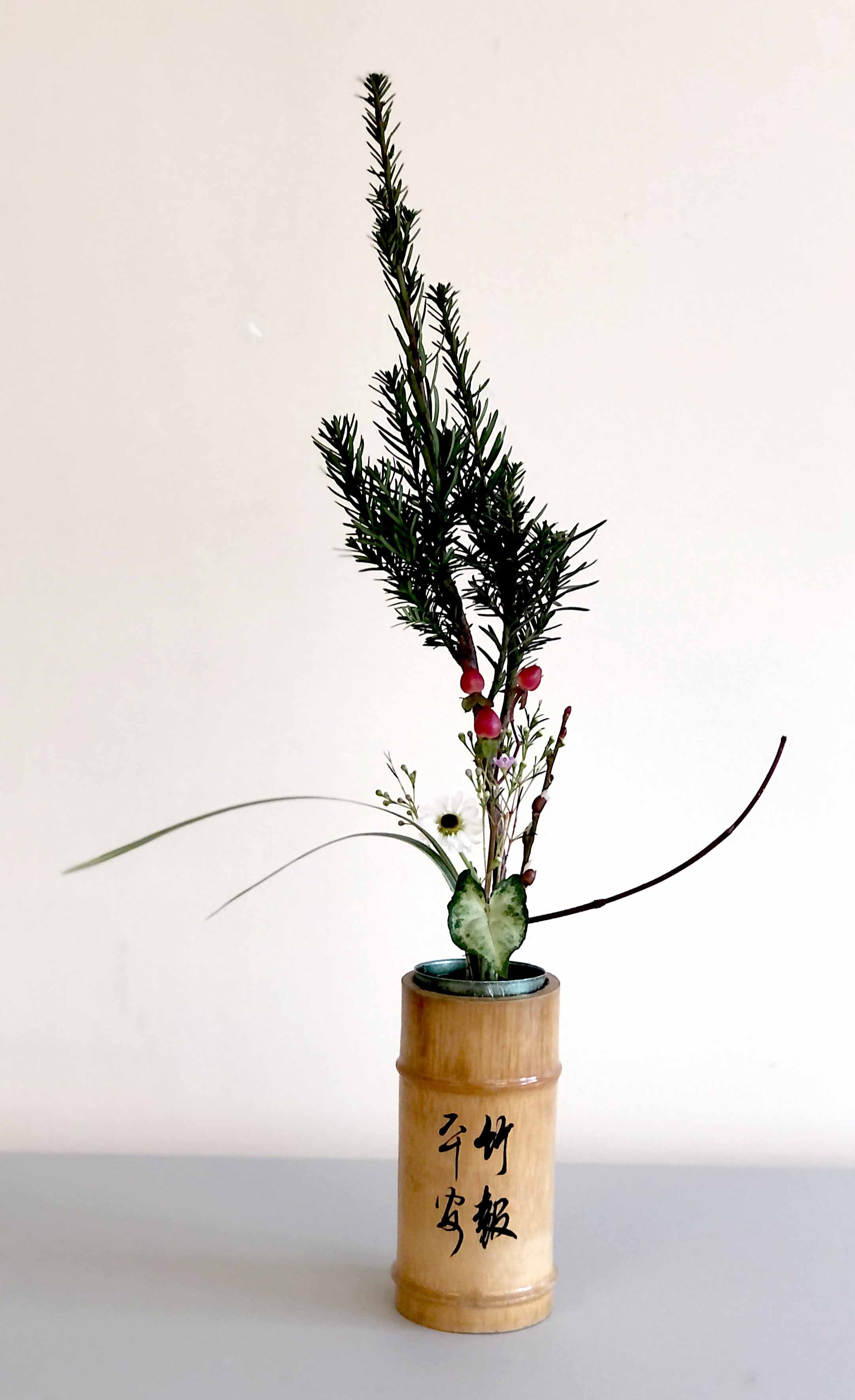Tatehana and Miniature Freestyle
Tatehana
Tatehana ("standing flowers"), also called tatebana, was one of the earliest forms of ikebana (546-1300) and used as a simple flower offering to Buddha. Since there were no records documenting rules for flower arranging until the late 15th century, the only depictions of tatehana forms are found in maki-e (picture scrolls), embroideries, illustrated sutras, and poems. These simple offerings later evolved into highly stylized arrangements known as rikka
Shinto ("the way of the gods") is Japan's major religion alongside Buddhism. Shinto gods, called kami, are sacred spirits found in nature in the form of wind, rain, trees, rivers, and mountains. In a demonstration of respect for these elements, tatehana was arranged to symbolize praying to them. There was a center pine branch called moto-ki, considered the object of prayers, with flowers at the bottom of the arrangement, shito-kusa. A seasonal material was added. Wire can be used to bend stems but was not originally used. Containers were usually bamboo but small ceramic and bronze vases can be used. Tatehana is traditionally arranged in a container 6-8" tall, with a thin neck.
Miniature Freestyle
Unlike traditional rikka and shoka designs, Ikenobo Jiyuka (freestyle) does not have definitive rules for constructing the arrangement. However, there are guidelines meant to assist in defining shape and form (e.g. vertical, horizontal, slanting), focal point, and use of floral materials to create harmony. There is no mizugiwa and stems may arise from a single point in the container or from many points across the container. Key elements in a freestyle arrangement are the arranger's expression of feeling and creative spirit.
Freestyle miniatures are arrangements made in very small (tiny!) containers, using small flowers and leaves. The challenge is to create Ikenobo freestyle at a very small scale while retaining a sense of harmony, expressiveness, and beauty. In miniature freestyle, the size of the arrangement is confined to a space 5 1/4"W x 5 1/4"D x 8 1/2"H. It may be smaller than these dimensions but it cannot be larger. Container possibilities are endless! Look around your kitchen - small jam jars, demitasse cups, tiny bowls, e.g. sugar bowl or creamer, saki cups, bud vases. Containers may be ceramic. bronze, glass, straw, etc. The shape and material of the vase will inspire the design and selection of floral materials. Because miniature freestyle arrangements are petite, they are particularly appropriate for placing around your home in unexpected places, adding a touch of beauty with living flowers.
Mimi Santini-Ritt
